Sometime last winter I started reading and taking an interest in online articles about a resurgence of analogue photography. I have long had an interest in photography which I am sure mostly comes from my dad. We used cameras lots as children, I had a variety of compacts although I couldn’t tell you which ones, more interesting were my dad’s SLRs. One of which was a Minolta XD7, which he used; the other a Zenit E. The Zenit was the children’s SLR, my dad’s from the 70s, a big hulk of a camera with a broken light meter. We had a variety of lenses, a normal, wide angle and telephoto. It’s the memory of taking some great photos with this that spiked my interest in film photography.
Next step was to find a camera. I remember the weight of the Zenit and carrying the extra lenses in a heavy bag, so wanted to go lighter. As a possible part time hobby, I didn’t want to spend a lot of money initially. Reading around the subject I came across rangefinders, cameras I didn’t know much about, other than the Leica brand.
So, looking at eBay I started watching Olympus and Canonet rangefinders, the classic examples, the prices looked reasonable until the last few minutes where they jumped up. I eventually saw a Minolta Hi-Matic from a house clearance, going very cheap. It looked in good shape but came untested. This model was the Hi-Matic 7, there is some information online but not a lot, more common and popular is the later slightly upgraded 7s model, and the later 7s II is the standout model of the range.
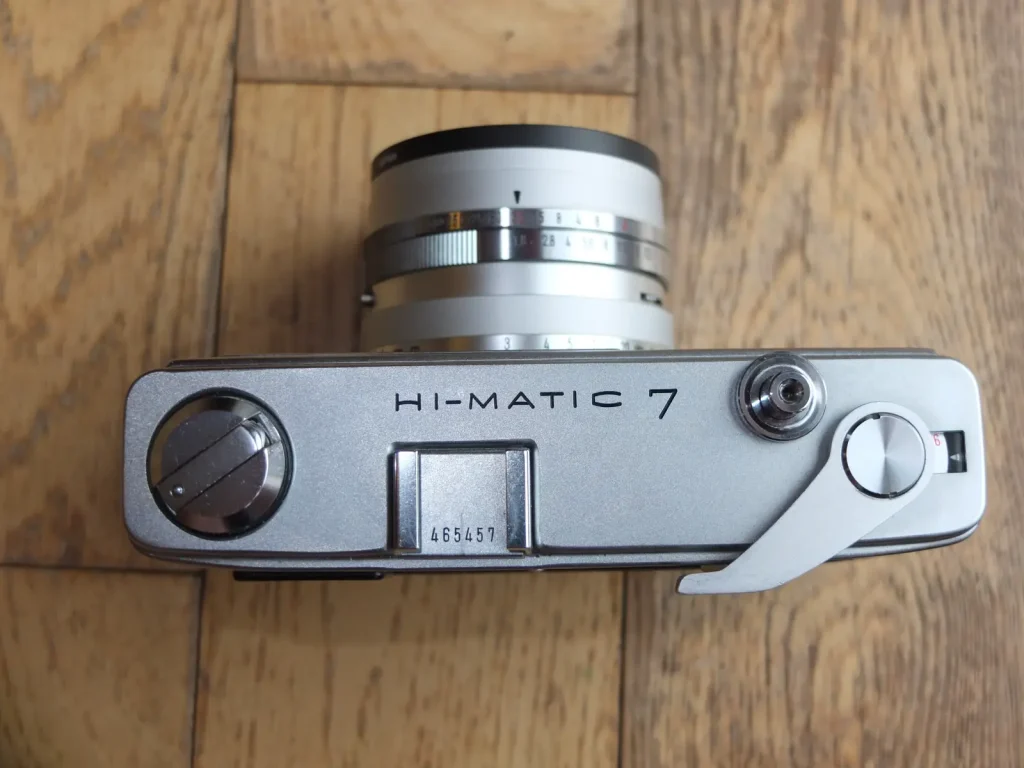
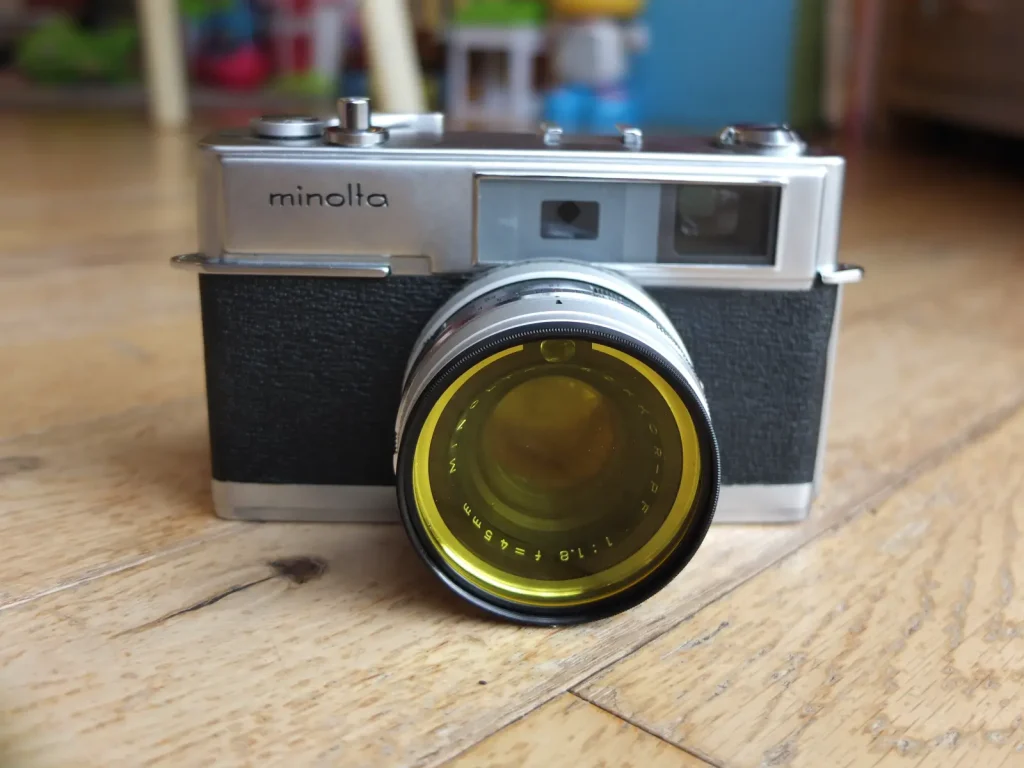
For £12 I figured couldn’t really go wrong so just went for it. The camera arrived a few days later, the case a bit tatty but the camera itself looking beautiful in shiny chrome. My desire for a lightweight camera didn’t really work out, the thing is a bit of a brick, weighing in at about 1.1kg with the leather case. Giving it a quick once over I was a little disappointed, the shutter worked but it was obviously not firing at the correct speed, everything was slow, at about 1 second.
Looking inside the camera looked clean and the lens in good condition, but there was a layer of oil on the aperture blades. This is, I suppose, always the danger of buying untested online. A bit of research I found a local camera repair shop in Edinburgh, Cameratiks. They also sell a variety of film cameras tested with warranty, maybe I should have gone directly there? Luckily my Hi-Matic only needed a CLA and it seemed good as new, the seller didn’t know any details about the camera, so I don’t know how often it was used, and how long been sitting unused in the attic.
The functions of the camera all work fine, excepting the self-timer, which I am not too bothered about. The meter seems accurate, although initially I was checked with a smartphone app and the sunny 16 until I was sure. There is a meter readout in the viewfinder but not a display of the aperture or exposure. Instead it displays an EV number based on the meter reading and the ISO selected.
On the outside of the lens there is a little window which displays the EV number corresponding to the aperture and speed selected on the lens. So, it’s a bit of a round about way to do it. Basically, select ISO then look through viewfinder to find out the required EV, then go the lens and rotate the aperture and speed rings till the correct EV is seen in the little window. A nice advantage of this method, however, is that it is very easy to set equivalent exposures for the same EV.
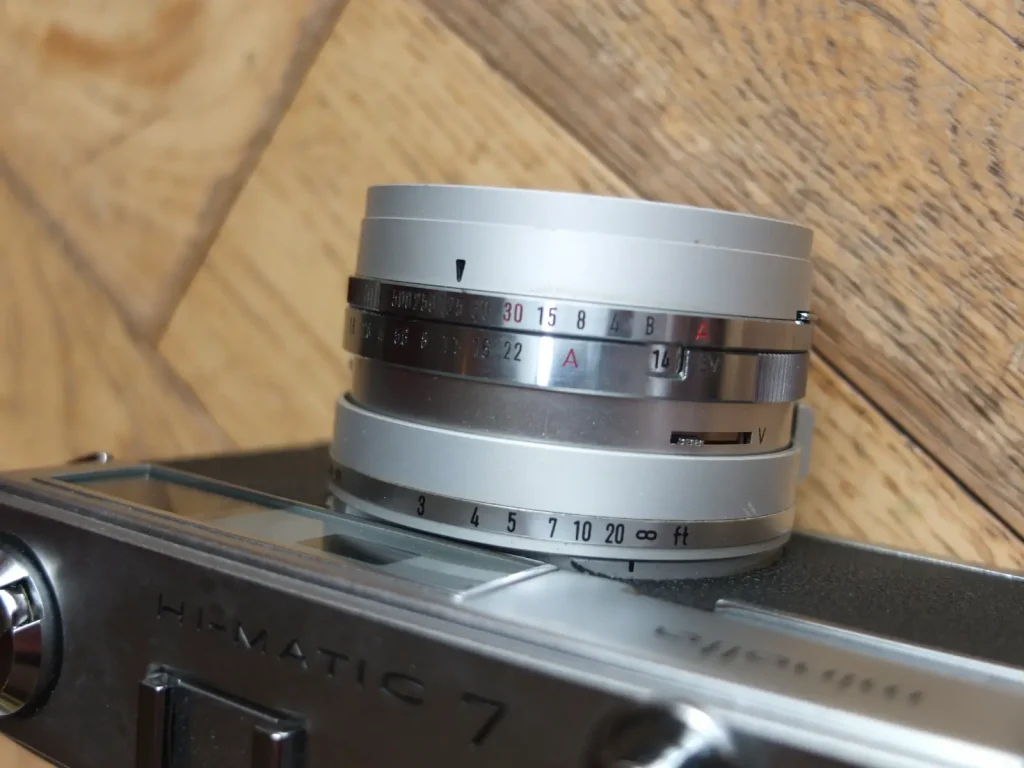
The quality of the camera is something I don’t feel very qualified to judge, the few articles I found online suggest the lens performs well and is quite sharp, it’s a 45mm lens with 6 elements in 5 groups. It opens up from f/1.8 to f/16. The camera speed goes up to 1/500 second.
In the year I’ve been shooting I have tried a variety of films from Fuji Colour 200 to HP5+ to Porta 400 and more. I have been pleasantly surprised with the results, probably from being a bit concerned about its age, I think it’s a 1965 vintage.
Each roll of film as given me some shots I have been very pleased with. The shot which really pleased me most was taken early on, in an amusement arcade in Blackpool. It was dull grey and wet outside, I had been hoping for some nice weather to photograph the tower and piers trying to get some faded glamour type shots. The inside was dark so I set widest aperture and slowest hand held speed and just took a shot of my wife and eldest daughter sitting on a chair together.
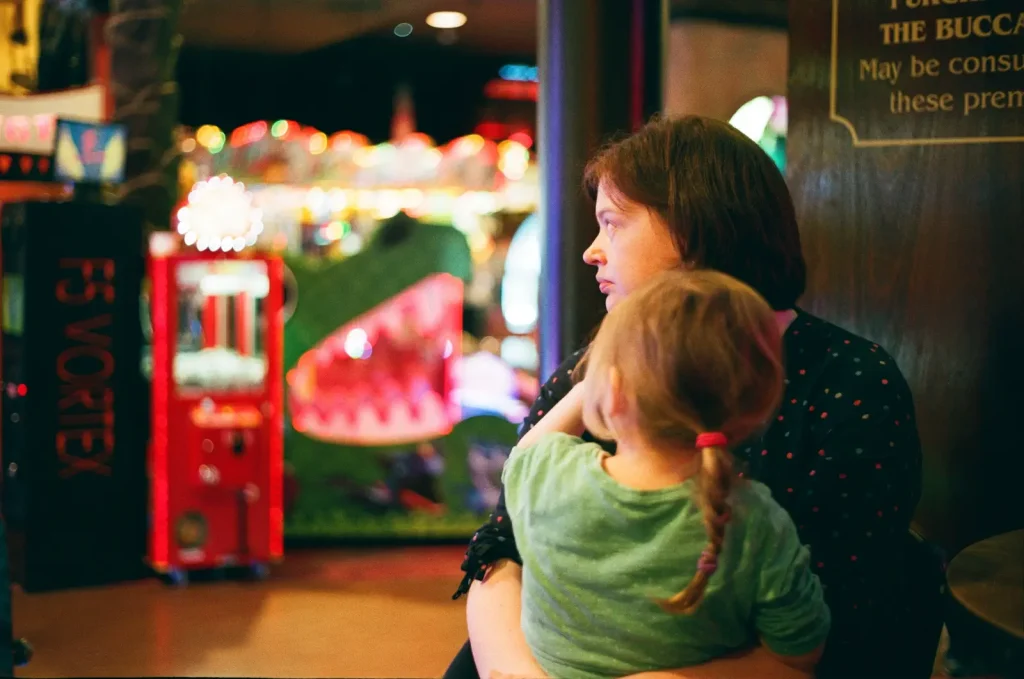
Just taken on a whim, thinking it would probably be too dark, it turned out lovely, very shallow depth of field, vibrant colours of the amusements in the background. It’s the shot that, I think, meant I would continue shooting film and not just a passing fad.
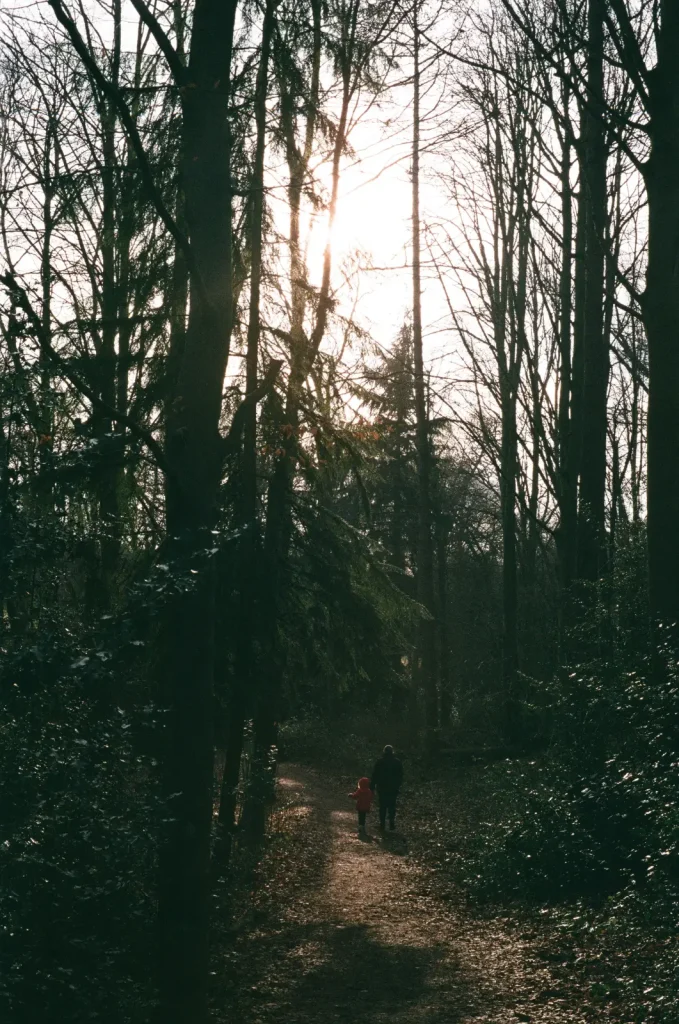
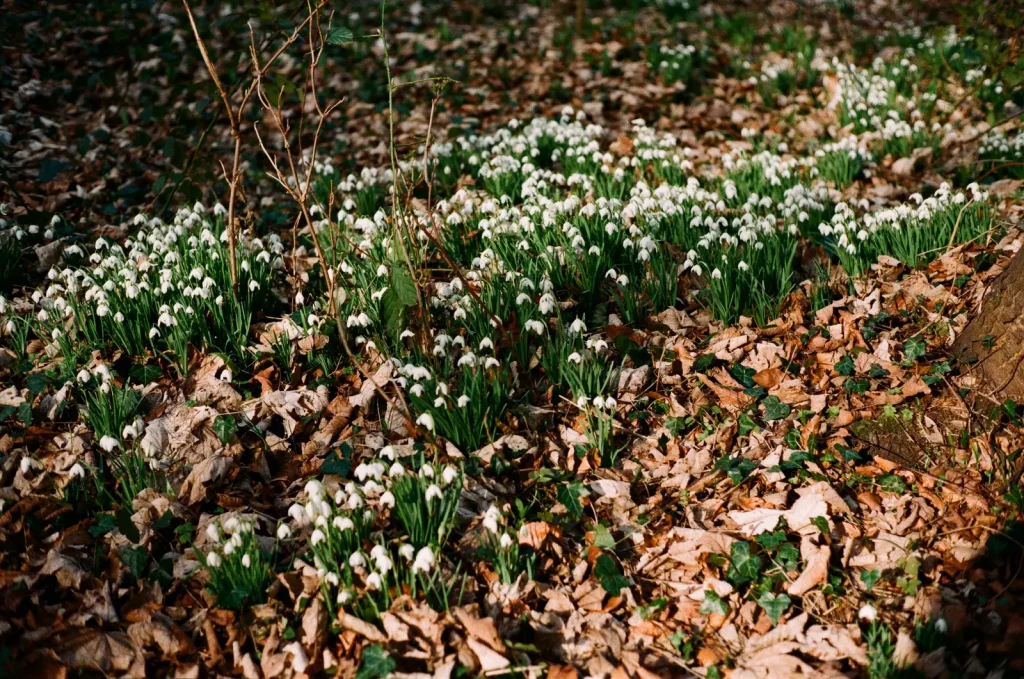
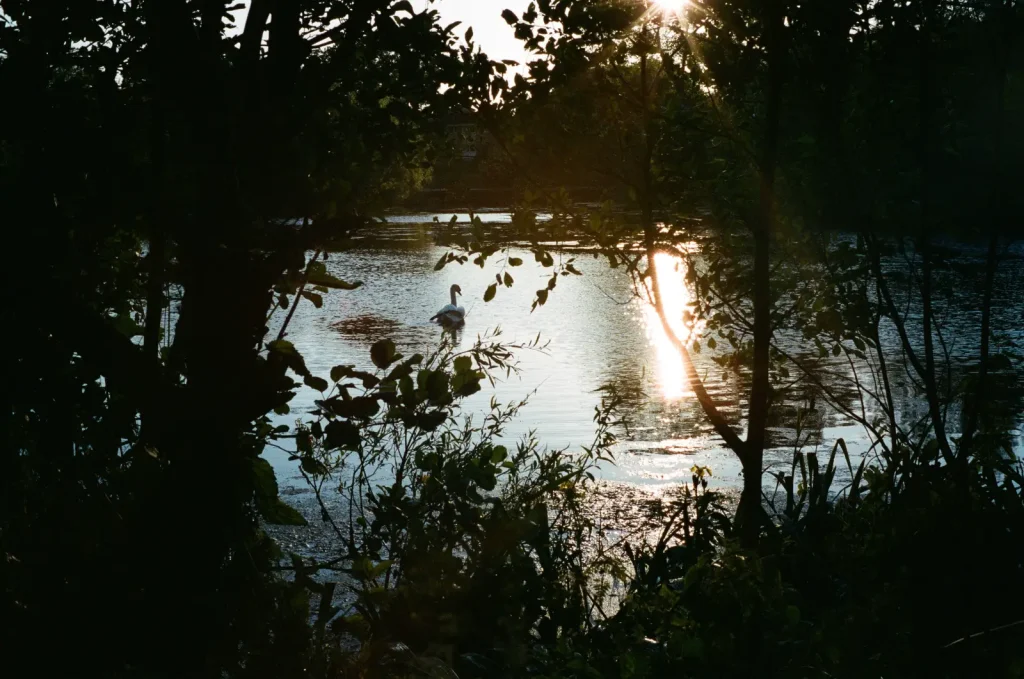
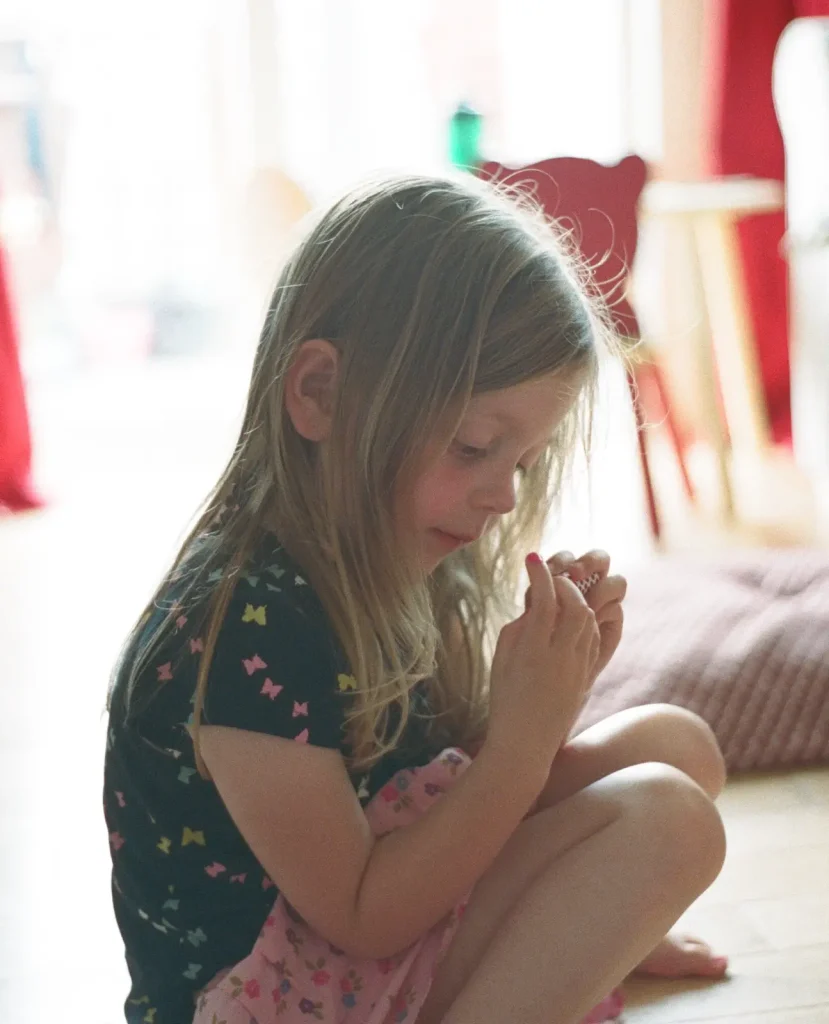
I am still very much experimenting with the medium, I am loving Porta 400 film for colour and HP5 for black and white. I have some TMax P3200 in the camera just now , but still half a roll the finish off. I have bought a yellow filter for the lens for when I use black and white film, usefully the cell for the meter is located inside the thread for the filter, so will meter through the filter. I’m unsure how much difference it has made, but the camera looks really cool with it attached.
For my birthday in September I was given a course at Stills Gallery in Edinburgh to learn how to develop black and white film, this was a wonderful opportunity to learn more about film photography, and I really took away was how much shot can be altered after its been taken. In digital its always something you do, a little play with the contrast etc, I thought film photography almost more pure than that, and a very accurate record of the that moment in time. It’s not always the case, processing time and dark room techniques like dodging and burning can alter your image drastically, it was fascinating and quite an education.
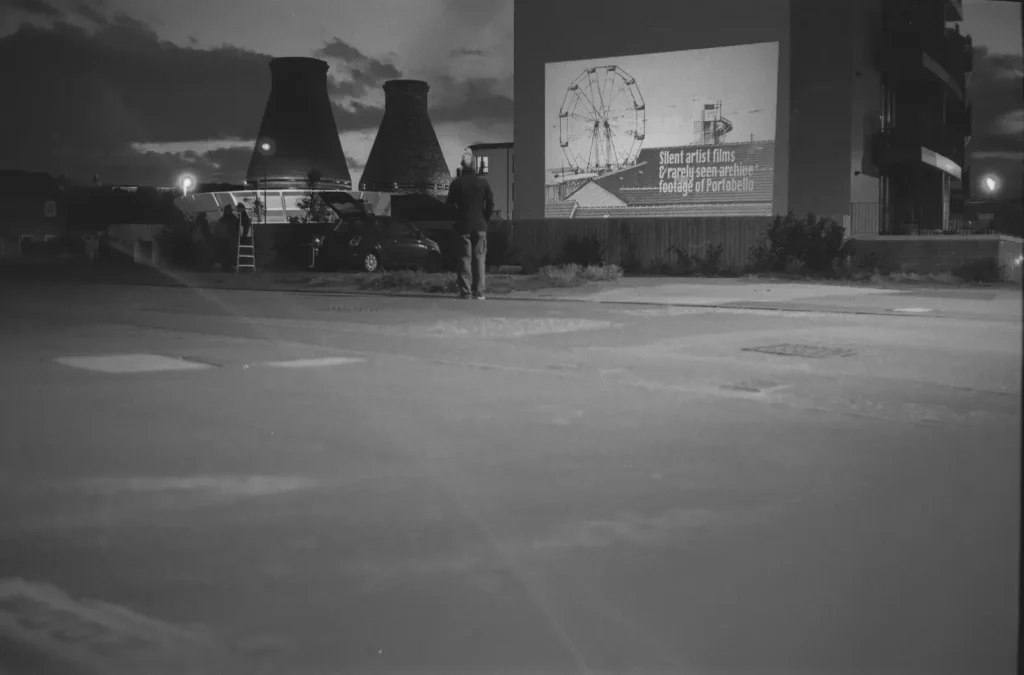
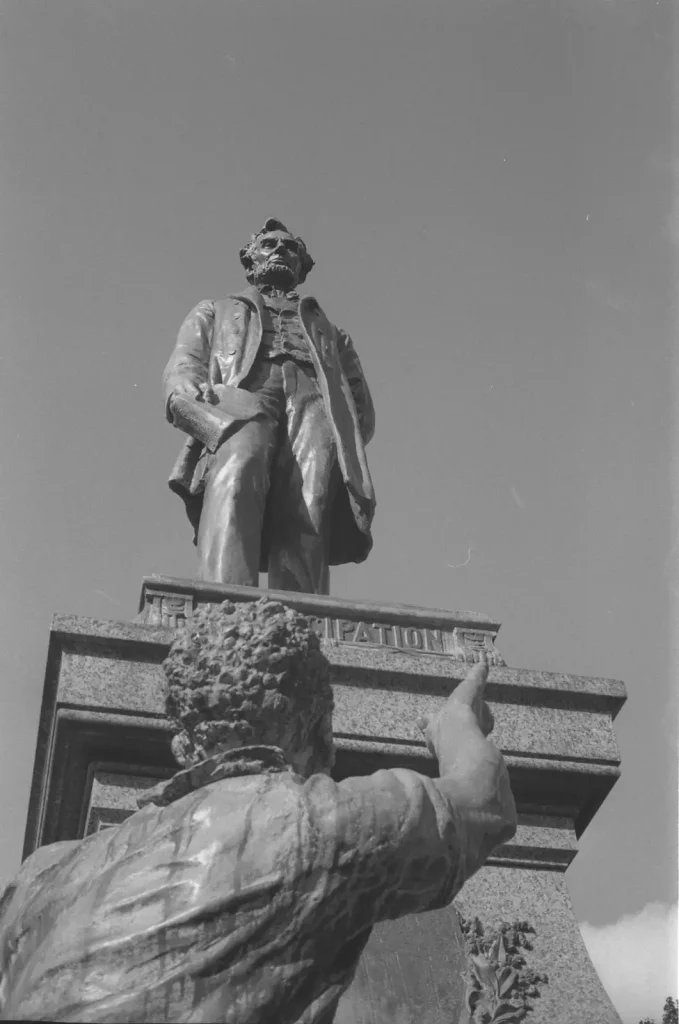
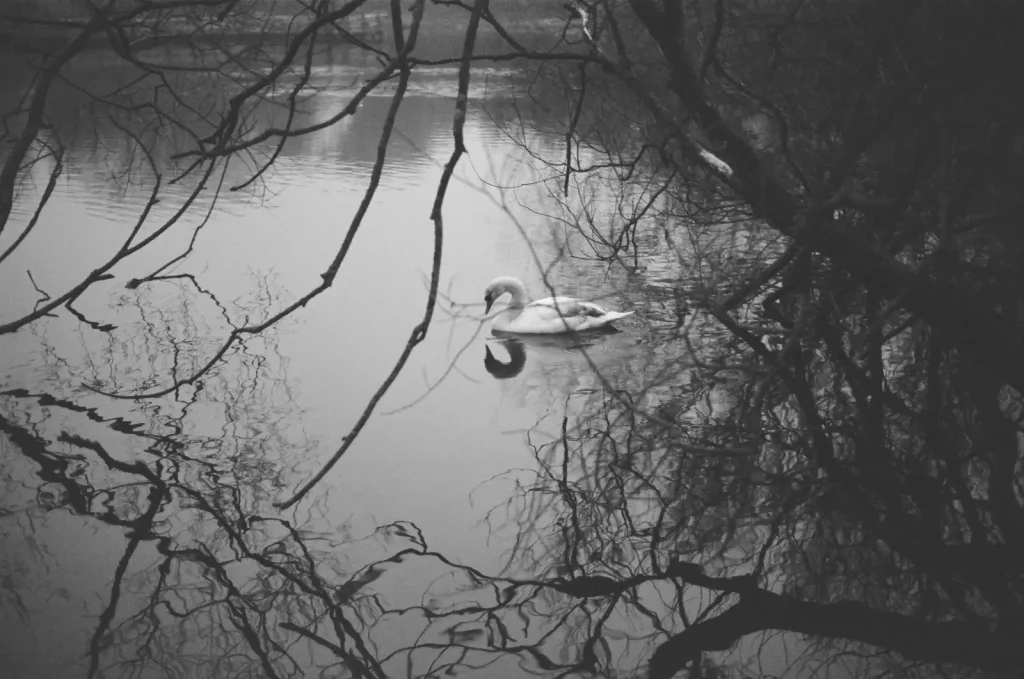
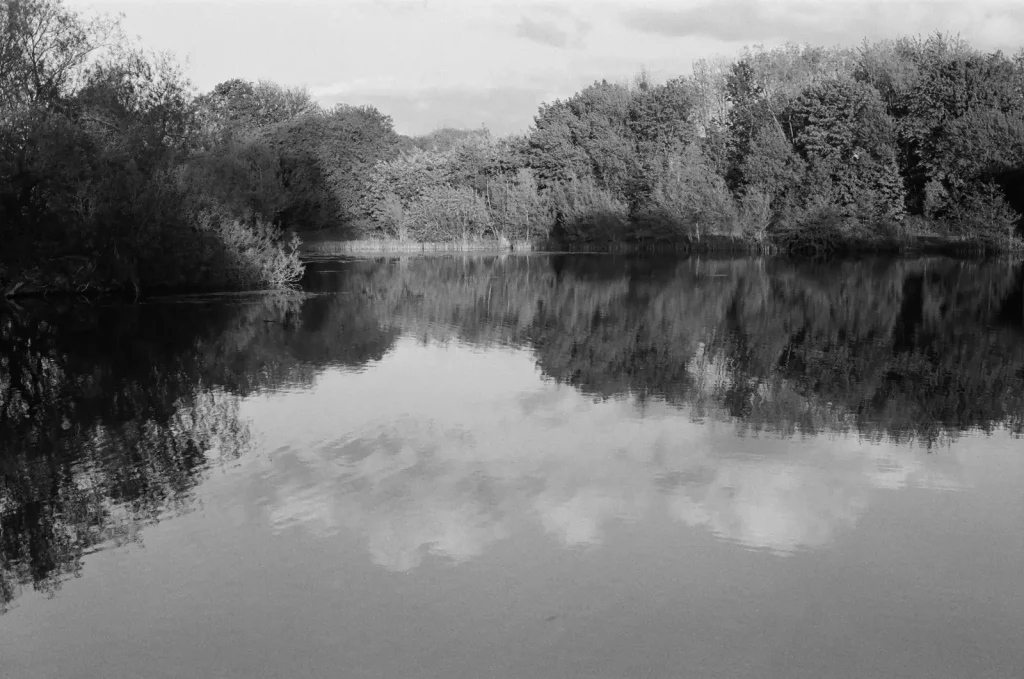
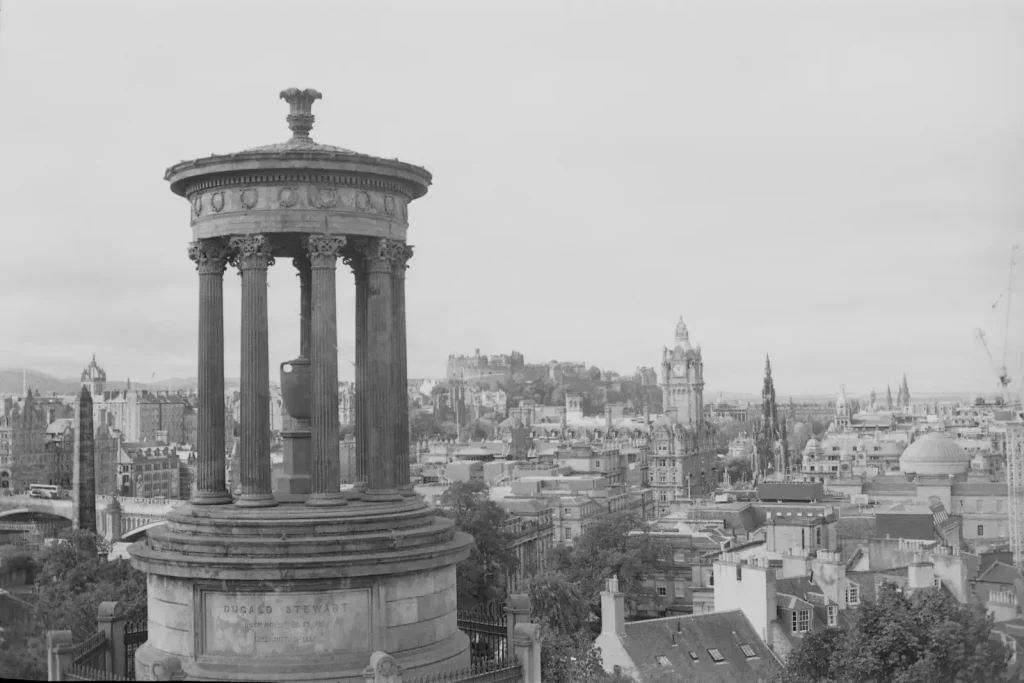
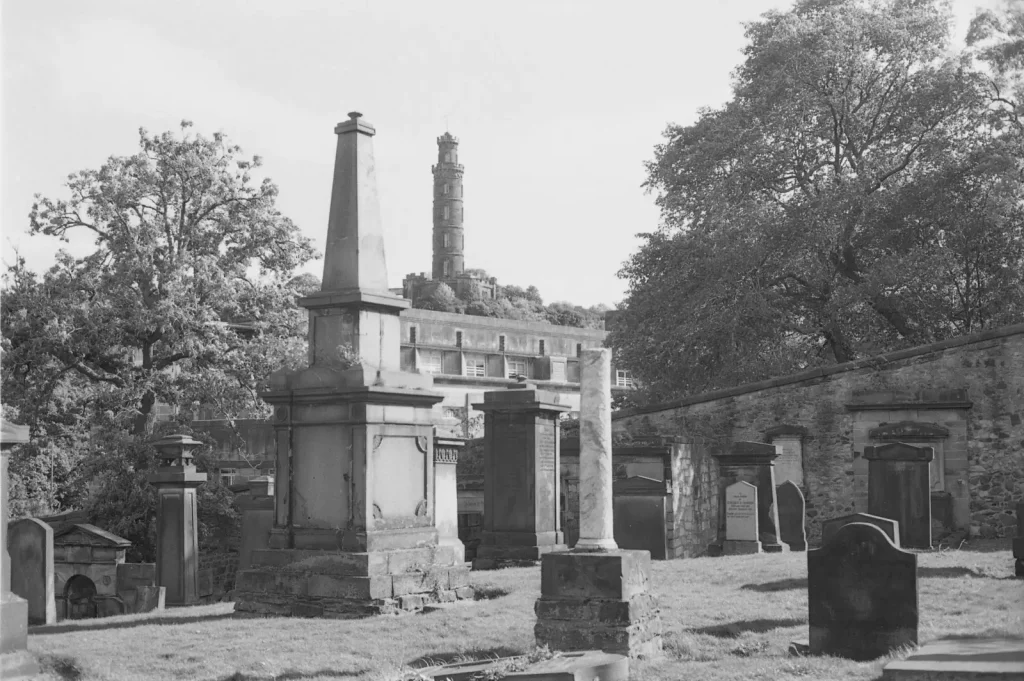
As you can see, I am mainly taking local shots of the city, and family and holidays; Edinburgh is a fantastic city to photograph. Going forward I will always be taking photographs of my family, but I feel I need expand my photography more, or maybe try and develop a certain style. A long term project would be a possibility or just being more experimental.
At the moment, I am still trying to figure out my ideal work flow. Since doing the course I have access to the studio in Stills, for a cost, to develop black and white, use their scanners and darkroom print. I do not shoot a large volume of film and cannot quite figure out easiest and most cost effective way to work. I have had colour rolls developed and scanned commercially with good results. I am tempted to go down the route of home developing with a dark room bag for my black and white, but then I don’t have a suitable scanning at home. I tried scanning with my digital camera, a Fujifilm X10, but without much success yet, although I have not given up hope.
Spending more time with analogue photography, reading blogs and looking at Instagram has really made me think more about my digital photography too. I have had my Fuji X10 for about 7 years but have experimented more this past year than ever before. I have been taking high contrast black and white street shots, and long exposure blue hour shots, that feeling of GAS is always lurking, but actually am enjoying my digital camera as much as ever.
I have made another purchase though, I was on the lookout for a small 35mm compact. This was hard to find at a responsible price, with prices going crazy just now. I found a Pentax PC35af at a good price though, less than £20, partly because a bit of its film advance thumb wheel is snapped off, meaning you can’t advance all the way to next frame by hand. I solved this problem with by adapting a plastic kiwi fruit spoon which is now attached the wrist strap!
Sometimes I fancy a SLR for the interchangeable lens ability, and sometimes I think I need a new digital camera, possibly a mirrorless to attach some legacy lens to it. At some point I would like to try out a classic M-mount Leica too, but would probably never buy one. What I would like to try however is a medium format camera, to get a feel of how different the quality is from big negatives; maybe a TLR would be nice. There must be plenty of people in the same boat, I’m a little surprised there isn’t a business somewhere that rents out old cameras…?
Anyway, overall I am very happy with my Minolta and the photos I am getting. Being fully mechanical I am hoping if I keep it in good condition there won’t be much to go wrong and it will last me a good few years yet.
I hope you enjoy my photos and I look forward to reading your comments.
More images on Instagram @sebcopley
Share this post:
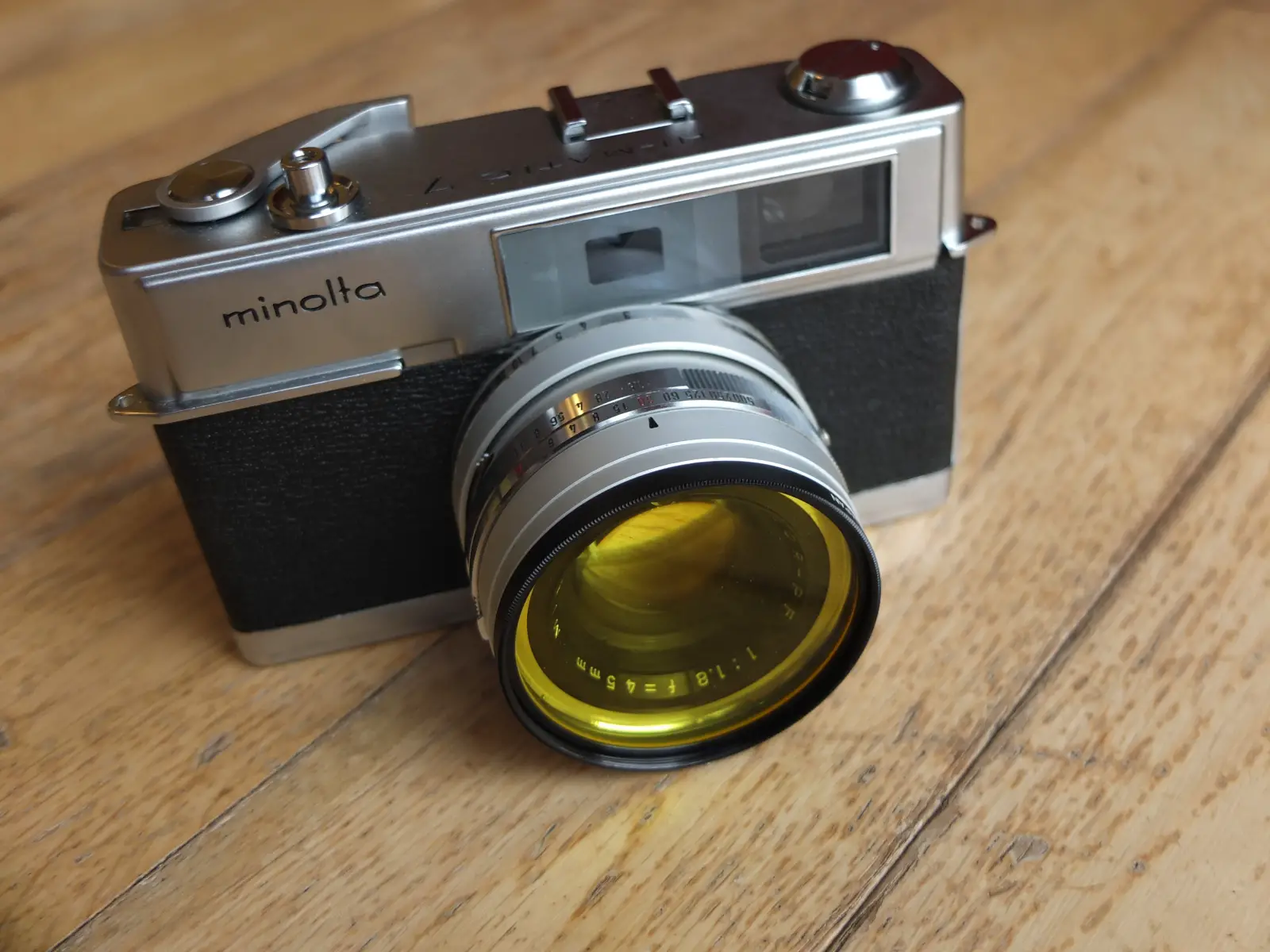








Comments
Krishna Kumar on Minolta Hi-Matic 7 Review – One Year Shooting Film – By Seb Copley
Comment posted: 31/05/2019
Lucky You ... !
Did quite a lot of film photography with the Minolta Hi-Matic 7 ...
During my film photography days I tried my best to locate the Hi-Matic 7 and buy it ...
But, living in India it was a dream to never come true for me...
Later I consoled myself with a used (and in good condition) Minolta X 300 with a 50 mm f/1.7 optic which gave me loads of Very good results over three years after which I shifted to Autofocus with the Minolta AF 3 Xi and a 50mm f/1.8 optic ...
I consider Minolta to be an exceptional camera and lens manufacturer with uncompromising quality standards always ahead of their time building innovative technology into their cameras ...
I hope you too share my views ... !!!
Regards
Krishna Kumar, Chennai, India
Gordie on Minolta Hi-Matic 7 Review – One Year Shooting Film – By Seb Copley
Comment posted: 31/05/2019
Amit on Minolta Hi-Matic 7 Review – One Year Shooting Film – By Seb Copley
Comment posted: 01/06/2019
Comment posted: 01/06/2019
Brian on Minolta Hi-Matic 7 Review – One Year Shooting Film – By Seb Copley
Comment posted: 02/06/2019
James Rinaldi on Minolta Hi-Matic 7 Review – One Year Shooting Film – By Seb Copley
Comment posted: 05/07/2019
Sheryn on Minolta Hi-Matic 7 Review – One Year Shooting Film – By Seb Copley
Comment posted: 19/10/2019
I would like to ask for an opinion from you: I am a film photography hobbyist who has been taking film photos since 2017. My first and current camera is the point-and-shoot Olympus Mju-ii, a family camera that has survived the years in mint condition. I am considering buying a rangefinder film camera for Christmas, and I'm torn between 3 choices: the Yashica Electro 35 GSN/GST, Minolta Hi-Matic 7, and Olympus 35SP. Each camera varies in price: Yashica costing Malaysian Ringgit 550, Minolta costing Ringgit 480, and Olympus costing Ringgit 1.2k. Currently, I am more drawn towards the Minolta and the Olympus due to the sharp lens, however, with the ringgit 800 in difference, I'm still hesitant to make a final decision.
Could I perhaps have your opinion and advice on which would be the best for me? I would like to get a camera that is worth the money in a long-run as I don't usually purchase film cameras regularly, and aim for my next camera to be a Leica. I am not very particular whether the camera is fully manual or not, though that would be a good option besides the camera being automatic as well.
Many thanks in ahead and thank you for this review once again!
Camera Review Blog No. 08 – Minolta Hi-Matic 7s – Alex Luyckx | Blog on Minolta Hi-Matic 7 Review – One Year Shooting Film – By Seb Copley
Comment posted: 27/11/2019
John zCollins on Minolta Hi-Matic 7 Review – One Year Shooting Film – By Seb Copley
Comment posted: 20/02/2020
A Couple of Bodged Fixes for a Pentax PC35AF - By Seb Copley - 35mmc on Minolta Hi-Matic 7 Review – One Year Shooting Film – By Seb Copley
Comment posted: 08/08/2020